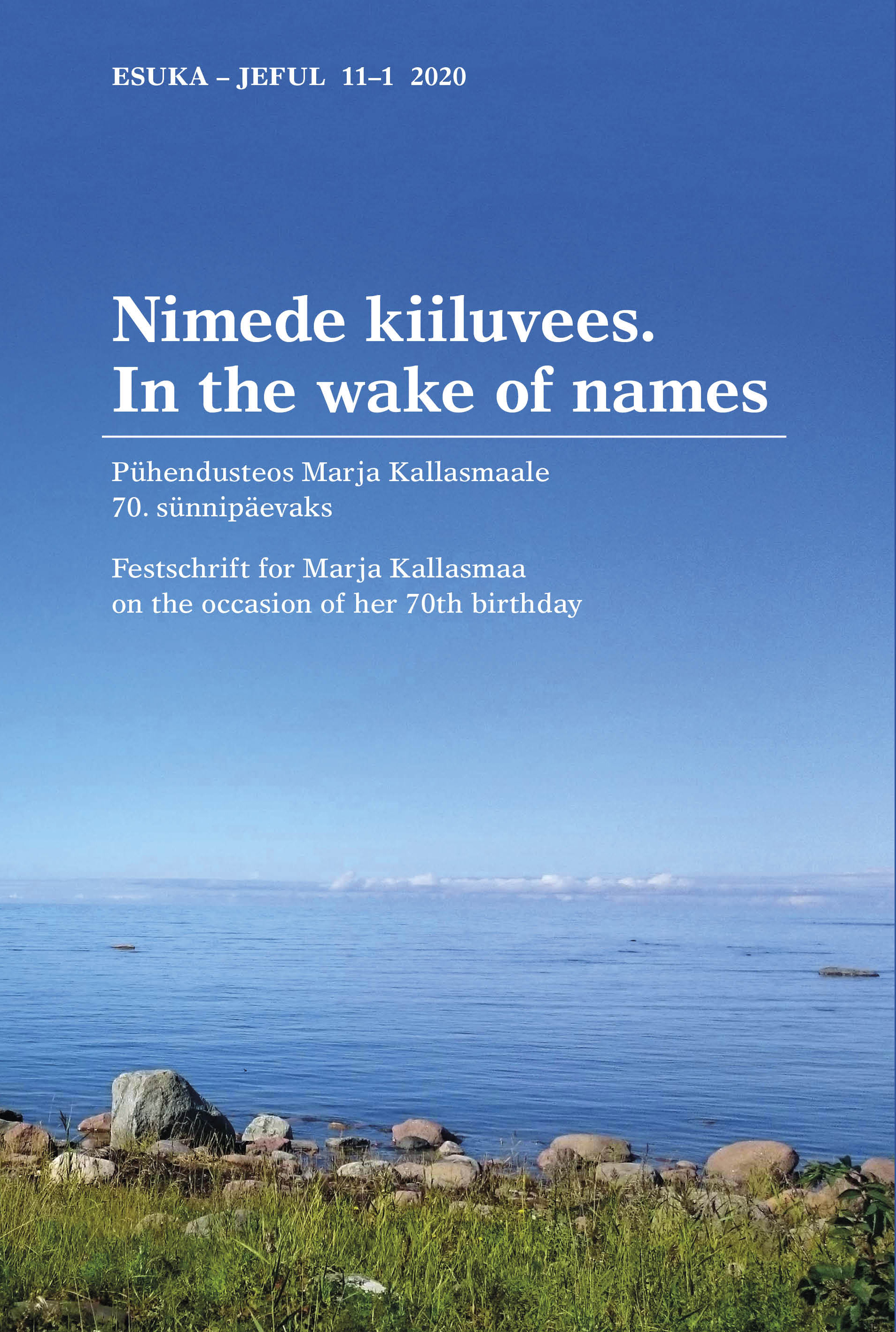Vadja loodus- ja viljelusnimedest
DOI:
https://doi.org/10.12697/jeful.2020.11.1.08Keywords:
kohanimed, loodusnimed, viljelusnimed, etümoloogia, vadja keel, läänemeresoome keeled, toponyms, names of natural objects, names of cultivation objects, etymology, Votic, Finnic languagesAbstract
Vadja toponüüme koguti süstemaatiliselt XX sajandi teisel poolel. Sellest ajast pärinevad Eesti Keele Instituudi ja Emakeele Seltsi kohanimekogud. Siinkirjutajal õnnestus aastatel 2001–2004 panna kirja kõigest 40 kohanime. Vadja toponüümikat on seni uurinud peamiselt Paul Ariste. Käesoleval sajandil on väheste toponüümide algupära käsitlenud üksnes Leningradi oblasti Kingissepa rajooni asjaarmastajad. Käesolevas kirjutises, mis lähtub peamiselt mainitud kogudest ning käsitleb loodusja viljelusnimesid, on põhitähelepanu pööratud kohanimede päritolule. See võimaldab paigutada nad atribuutide ehk täiendosade järgi tähendusrühmadesse. Uurimuses tehakse kindlaks samuti kohanimede determinandid ehk liigisõnad. Tähelepanuta ei jää ka nende morfoloogilised iseärasused. Vadja keeles leidub nii primaarseid kui ka sekundaarseid kohanimesid, sageli on kirja pandud ka determinandita toponüüme, samuti üksikuid terminnimesid. Loodus- ja viljelusnimed on päritolult üsna sarnased. Nad on arenenud looduskogumeid, loomi, taimi, omadusi, asendit jt aspekte tähistavatest apellatiividest, tulenedes mõnikord ka reaalsete isikute või pühakute nimedest. Toponüümide moodustamise printsiibid sarnanevad teiste läänemeresoome keelte kohanimede moodustamise põhimõtetega. Nimede atribuut esineb peamiselt ainsuse nimetavas ja omastavas, determinant aga tavaliselt ainsuse ja harva mitmuse nimetavas käändes. Üks ja sama toponüüm võib mõnikord tähistada heinamaad, sood, metsa ja põldu. See näitab nende kunagist vahelduvat kasutusala. Kohanimede päritolu uurimisel on selgunud hulk üldnimesid, mida pole registreeritud väljaspool toponüümikat.
Abstract. Enn Ernits: Votic names of natural and cultivation objects. A more systematical recording of Votic toponyms took place in the second half of the 20th century. Since then, the place name collections of the Institute of the Estonian Language and the Mother Tongue Society have been dated. The author managed to record only 40 toponyms between 2001 and 2004. Votic toponymy has so far been studied mainly by Paul Ariste (1964, 1965a, 1965b, 1967, 1968). In this century, only the amateurs of the Kingisepp district of the Leningrad region have dealt with the origin of some toponyms (see Demina 2009). This paper, which is mainly based on the previously mentioned collections and deals with the names of natural and cultivation objects, focuses on their origin. This allows us to classify place names by attributes into groups by their meaning. The study also identifies the generic terms of place names. The morphological features of toponyms are not neglected either. In Votic language, there are both primary and secondary place names, often toponyms without a generic term and sometimes term names. Names of natural and cultivation objects are quite similar in origin. They have evolved from the apellatives denoting nature, animals, plants, features, location and other aspects, sometimes deriving from the names of real persons or saints. The principles of toponym forming are similar to those in other Finnic languages (Ariste (1967: 83). The attribute of names occurs mainly in the nominative and genitive of singular, but the generic term is usually in the singular and rarely the plural. The same toponym can simultaneously refer to meadows, marshes, forests and fields. This indicates their former, alternative use. Examination of the origin of place names revealed a number of common names not recorded outside the toponymy.


